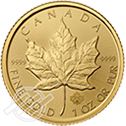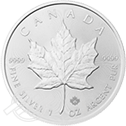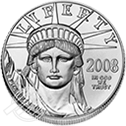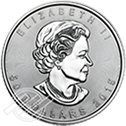Gold vs. the Dollar: Understanding Their Relationship
As the dollar’s value ebbs and flows compared with other currencies, shrewd investors and those with an eye on monetary policy and exchange rates look for new investment opportunities. For many, that means looking at gold. But knowing how the value of gold and the dollar intersect is vital to avoiding a financial misstep.
Let’s walk through the history of gold as a vehicle for trade and investment and how it plays against the value of the U.S. dollar.
The History of Gold
Human civilizations have valued gold for centuries, dating back to ancient Egypt. Gold’s lustrous appearance and malleability make it an ideal material for crafting. Ancient people treasured gold for its scarcity and beauty, using it in religious artifacts and decorative items, including jewelry.
Gold holds value as a medium of exchange and currency. Going back to ancient Lydia in 550 B.C., struck gold coins formed an essential basis of trade. Several nations—including ancient Rome—followed suit. Many countries used gold as the basis of their currency, creating a gold standard.
Today, gold plays a vital role in various industries, such as electronics, dentistry, and aerospace, due to its durability and versatility. But it also plays an important role in finance. Even though governments today rarely use gold to back their currencies (the gold standard), many nations hold it as a foreign exchange reserve.
Gold vs. the Dollar
Gold and the U.S. dollar have a fascinating, complex relationship.
When the dollar’s value strengthens against other currencies, the price of gold typically falls—and vice versa. A stronger dollar typically makes gold more expensive for other currency holders, reducing demand. When the dollar weakens, gold becomes cheaper. That makes it more appealing to foreign investors and drives up the price of gold.
That said, the relationship between gold and the dollar isn’t always consistent. Numerous factors influence the value of the U.S. dollar and the price of gold, including:
- Geopolitical events
- Market sentiment
- Interest rates
- Inflation
- Monetary policy
- Supply and demand
Despite their complex relationship, gold and the dollar play crucial roles in the global financial system because each offers a unique perspective on economic health and stability.
The Value of Gold
What are the main drivers of gold prices? Gold’s value has a complex relationship with various economic and political factors, including:
- Geopolitics: Geopolitical uncertainty impacts the price of gold. Specifically, gold prices tend to increase during geopolitical tension as investors seek safe, stable investments. This can even have a “trickle-down” effect on the other factors listed below.
- Supply and demand: Like most commodities, the balance of supply and demand plays a critical role in determining the price of gold. When demand outstrips supply, prices go up. When supply outpaces demand, prices go down.
- Economic factors: Inflation, gross domestic product (GDP), interest rates, and other economic variables can significantly influence the price of gold. Investors might turn to gold as a safe haven asset during high inflation or economic uncertainty. That can quickly drive up the price.
- Investor behaviors: Investor behaviors are a vital driver of gold prices, whether those investors act in predictable or unpredictable ways.
- Currency values: The U.S. dollar’s value relative to other currencies can also impact the price of gold. Gold prices for foreign buyers rise when the dollar is stronger than their currencies. This can often reduce demand and lower those prices. Gold becomes cheaper for those same buyers when the dollar weakens compared with their currencies. This might increase demand and drive up prices.
- Monetary policies: Decisions by central banks worldwide, especially the U.S. Federal Reserve, can influence gold prices. When interest rates are low, alternative investments that pay interest might become less attractive than gold. This can lead to price increases.
The Value of the Dollar
Much like gold (and other currencies), the U.S. dollar’s value is subject to several influential factors, many of which interact in tangled webs. The dollar shares several of these influences with gold, including supply and demand, geopolitical factors, and economic performance. Other factors that are generally unique to the dollar’s value include the following:
- Inflation: Inflation erodes purchasing power, which can decrease the dollar’s value. Conversely, low inflation can boost the value of a dollar.
- Interest rates: Higher interest rates relative to other countries might attract foreign investors who seek higher returns. This can increase the demand for the dollar. Lower interest rates might deter foreign investment, reducing demand and value.
- Geopolitical factors: Political stability and geopolitical events can influence investor confidence. Uncertainty or instability might decrease confidence, reducing the dollar’s value.
- Public debt: High levels of public debt can make investors wary, which could drive down the dollar’s value. The impact of public debt can be complex and depends on many factors, including whether that debt is domestic or foreign-owned.
Remember, these factors often interact in complex ways. Before you make investment decisions in currency or gold, consider speaking with a trusted financial professional.
Gold vs. the Dollar FAQs
How does the value of the U.S. dollar affect the price of gold?
The U.S. dollar’s value significantly impacts the price of gold because the two share an inverse relationship. This correlation occurs primarily because the global market prices gold in U.S. dollars. Here’s how it works:
- When the dollar strengthens versus other currencies, gold becomes more expensive for foreign investors. This can decrease demand and lower the price.
- When the dollar weakens compared to other currencies, gold becomes cheaper. This can stimulate demand, driving the price up.
- The U.S. Federal Reserve makes monetary policy decisions that can influence the value of gold and the dollar. Tight monetary policy, such as raising interest rates, can strengthen the dollar. This puts downward pressure on gold prices. Loose monetary policy has the opposite effect.
- As investors perceive the dollar as strong or weak, they may move assets accordingly. This can influence gold prices.
Why is gold often seen as a safe haven investment?
Investors see gold as a safe haven investment for many reasons. It’s a reliable store of value, and its worth doesn’t depend on an issuer’s promise or government stability. It’s also an excellent hedge against inflation. As the cost of goods or services increases, gold’s value tends to rise. And because the value of gold and the dollar often rise simultaneously, this can protect investors from inflationary erosion. Finally, there’s a limited supply: Unlike money, gold can’t be printed or produced at will. This limited supply contributes to its enduring value.
How can investors take advantage of the dollar vs. gold relationship?
Savvy investors can use the dollar vs. gold relationship to their advantage in several ways. For example, diversifying your portfolio to include gold can help you hedge against currency risks. You can also watch interest rates closely to determine whether the time to buy gold is now or later. Finally, economic indicators like inflation, GDP growth, and employment figures can impact the dollar’s value.
Always remember that investing involves risks, and you should do thorough research or consult a trusted financial advisor before making investment decisions.
Get Started with Gold Investing
Gold investing can be a powerful tool to help protect your investment portfolio from disruption due to changes in the U.S. dollar. It’s also a fantastic way to diversify your retirement investments or savings.
Take a look at our Beginner’s Guide to Gold today to learn more about how a Gold IRA can help hedge against inflation.



